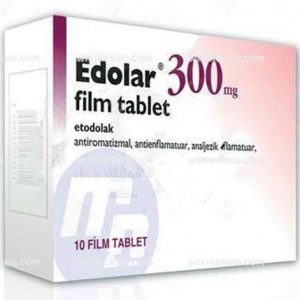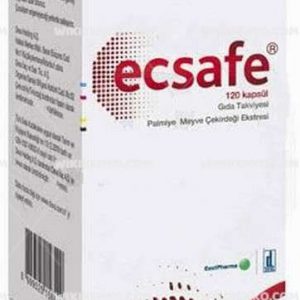Ergafein Dragee
In the realm of migraine management, the medication “Ergafein Dragee” emerges as a potential savior. This article takes an in-depth look at this drug, exploring its active ingredients, classification, authorization, dosage, and potential side effects. If you’re seeking clarity on Ergafein Dragee, you’ve come to the right place.
| Dosage form | |
|---|---|
| Pack size | |
| Potency | Combined |
| Manufacturer | |
| Origin | |
| Generic Name (Ingredient) | Ergotamine Tartrate 0.25 Mg Paracetamol 150 Mg Caffeine 60 Mg |
Assuming your emergency circumstances for this product, visit Urgent Quotation page. Besides, for any pharmaceutical questions, please ask us in the comments section.
Description
Ingredients
Ergafein Dragee is a pharmaceutical cocktail, blending three distinct active ingredients:
- Ergotamine: Part of the ergot alkaloid family, ergotamine shares structural and biochemical kinship with ergoline.
- Paracetamol (Acetaminophen): Renowned for its prowess in alleviating pain and reducing fever, paracetamol selectively inhibits COX activities in the brain.
- Caffeine: Structurally akin to theophylline and theobromine, caffeine assumes the role of a central nervous system (CNS) stimulant.
Classification
Ergafein Dragee enters the arena of pharmaceutical classification with an assigned code in the anatomical therapeutic chemical (ATC) system. It finds its niche in the following categories:
- ATC Code Group Title: N02CA52 Ergotamine, combinations excl. psycholeptics
- ATC Classification: Nervous system → Analgesics → Antimigraine preparations → Ergot alkaloids.
Authorization
Ergafein Dragee bears the stamp of authorization in Turkey, carving its presence in the pharmaceutical realm. In the world of identification, it aligns itself with the Turkish Identification Scheme, under the auspices of İlaç ve Tıbbi Cihaz Kurumu. The identifier that distinguishes this medication from others in the Turkish market is 8699508120093.
Additional Information
Despite our best efforts, detailed information about Ergafein Dragee remains elusive within English and Turkish sources. For specific insights into its usage, recommended dosage, potential side effects, contraindications, and interactions with other medications, the compass points firmly to healthcare professionals and pharmacists.
Dosage
Understanding the dosage of Ergafein Dragee is crucial for effective migraine management. Here’s a roadmap:
- Preventive treatment of seizures: At the initial hint of a migraine onslaught, 1 or 2 coated tablets typically suffice to deter the impending pain. If needed, this dosage can be repeated after 30 or 60 minutes.
- Treatment of a migraine attack: When the storm has already struck, 2 coated tablets should be ingested promptly. If necessary, additional doses of 4-6 coated tablets can be taken every half hour.
- Treatment of subsequent seizures: It is advisable to administer the quantity that successfully thwarted the initial migraine attack.
- Other indications: In cases beyond migraine management, 1 or 2 coated tablets are recommended thrice daily.
A word of caution: Ergafein should not be adopted as a daily, chronic companion. To mitigate the risk of hepatotoxicity, individuals consuming alcohol must ensure that their daily paracetamol intake does not exceed 2000 mg.
Ergafein Dragee Side Effects
Every pharmaceutical journey comes with potential companions in the form of side effects. For Ergafein Dragee, these can manifest as follows:
Common side effects
- Headache
- Dizziness
- Excessive drowsiness
- Numbness, tingling, or burning sensations
- Symptoms resembling upper respiratory tract infections
- Nausea
- Vomiting
- Constipation
- Upper abdominal discomfort and pain
- Indigestion
Rare side effects
- Dry mouth and taste disturbances
- Stomach pain and discomfort
- Additional episodes of constipation
- Diarrhea
- Weakness
- Tremors
- Restlessness
- Palpitations
- Tinnitus
- Rash and itching due to mild allergic reactions
It’s imperative to note that individual health conditions can influence the manifestation and severity of these side effects. Therefore, personalized advice from healthcare professionals is strongly advocated.
In Conclusion
In the complex landscape of migraine management, Ergafein Dragee offers a glimmer of hope. With its unique blend of ergotamine, paracetamol, and caffeine, it endeavors to provide relief to those grappling with migraine attacks. However, this journey should be undertaken under the guidance of healthcare professionals who can provide personalized insights and recommendations.
Table: Navigating the Terrain of Ergafein Dragee
| Aspect | Details |
|---|---|
| Product | Ergafein Dragee |
| Active Ingredients | Ergotamine, Paracetamol (Acetaminophen), Caffeine |
| Classification | ATC Code: N02CA52 Ergotamine, combinations excl. psycholeptics |
| Authorization and Marketing | Turkey |
| Identification Scheme | İlaç ve Tıbbi Cihaz Kurumu |
| Identifier(s) | 86995081200931 |
| Recommended Dosage | Varies depending on the purpose, always consult a healthcare provider |
| Common Side Effects | Headache, dizziness, drowsiness, numbness, tingling, upper respiratory symptoms, nausea, vomiting, constipation, upper abdominal discomfort, indigestion |
| Rare Side Effects | Dry mouth, taste disturbances, stomach pain, additional constipation, diarrhea, weakness, tremors, restlessness, palpitations, tinnitus, rash, itching due to mild allergic reactions |
In the pursuit of migraine relief, Ergafein Dragee stands as a potential ally. However, the path to effective treatment should always be illuminated by the expertise of healthcare professionals.
Use the form below to report an error
Please answer the questions as thoroughly and accurately as possible. Your answers will help us better understand what kind of mistakes happen, why and where they happen, and in the end the purpose is to build a better archive to guide researchers and professionals around the world.
The information on this page is not intended to be a substitute for professional medical advice, diagnosis, or treatment. always seek the advice for your physician or another qualified health provider with any questions you may have regarding a medical condition. Always remember to
- Ask your own doctor for medical advice.
- Names, brands, and dosage may differ between countries.
- When not feeling well, or experiencing side effects always contact your own doctor.
Cyberchondria
The truth is that when we’re sick, or worried about getting sick, the internet won’t help.
According to Wikipedia, cyberchondria is a mental disorder consisting in the desire to independently make a diagnosis based on the symptoms of diseases described on Internet sites.
Why you can't look for symptoms on the Internet
If diagnoses could be made simply from a textbook or an article on a website, we would all be doctors and treat ourselves. Nothing can replace the experience and knowledge of specially trained people. As in any field, in medicine there are unscrupulous specialists, differences of opinion, inaccurate diagnoses and incorrect test results.





Reviews
There are no reviews yet.